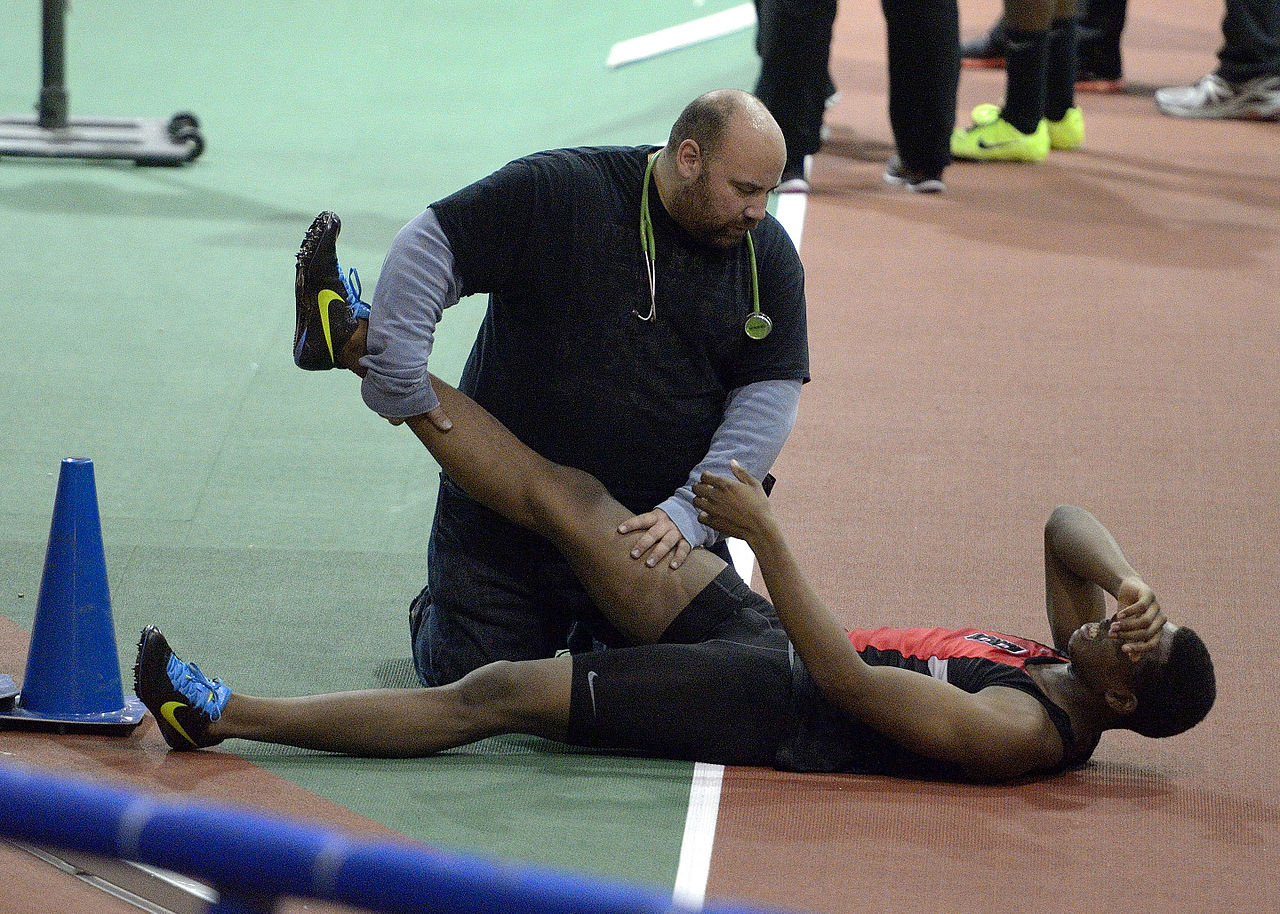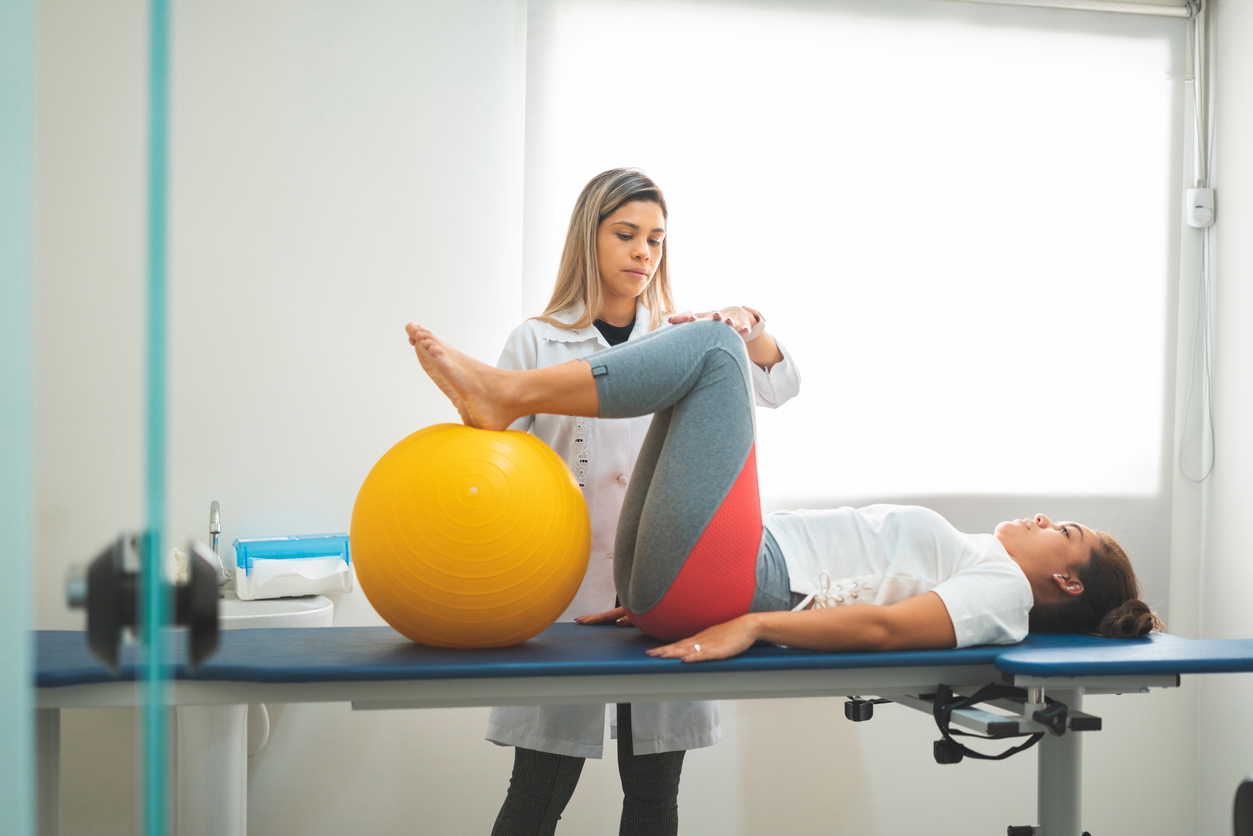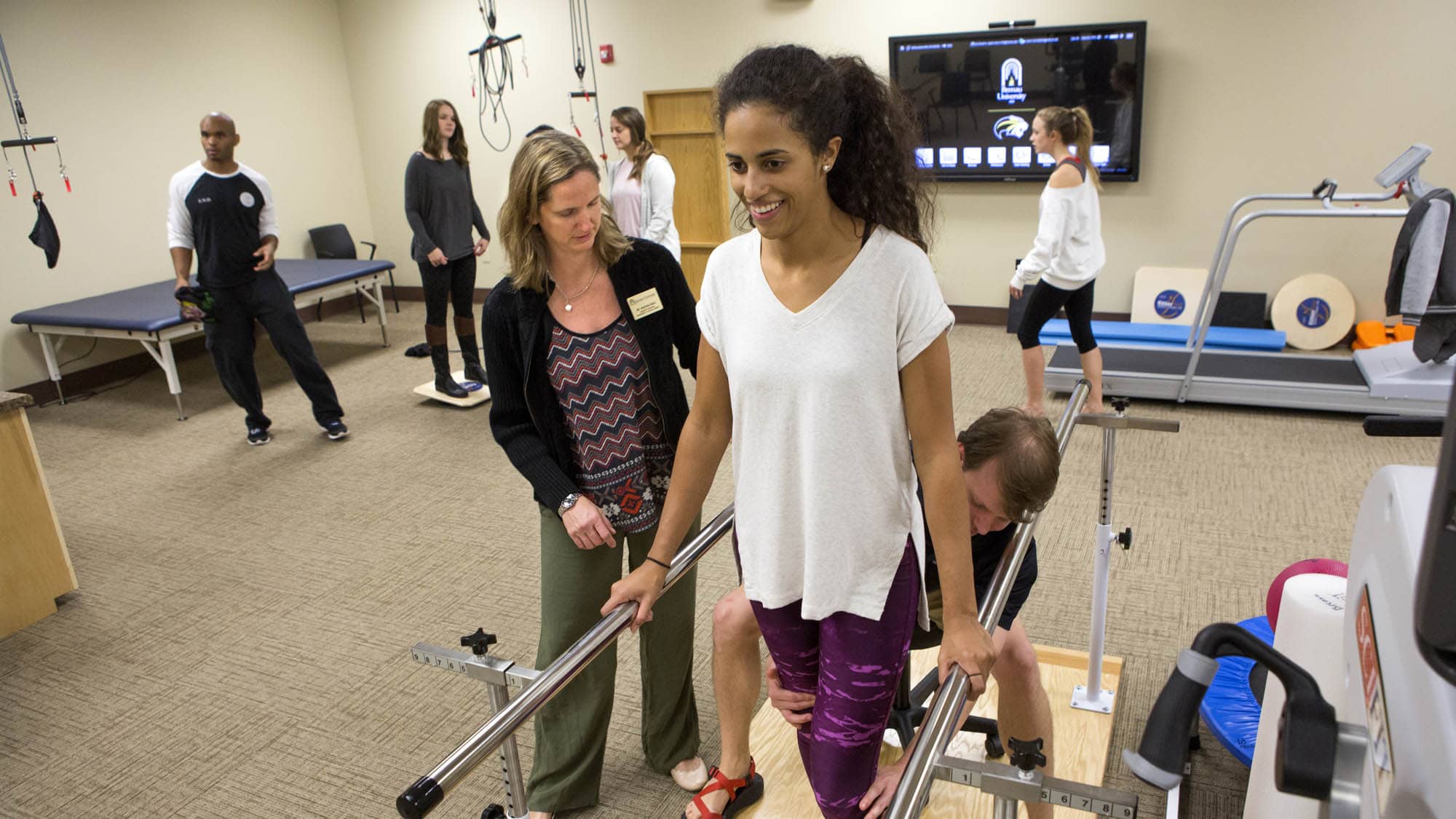
Exercise Daily – Physical therapy is crucial in improving mobility and strength for individuals dealing with various injuries, medical conditions, or physical limitations. With the help of skilled physical therapists and a wide range of therapy techniques, individuals can experience relief from pain, regain function, and enhance their overall quality of life. In this article, we will explore different types of physical therapy and the techniques used to promote mobility, relieve pain, and strengthen the body.
Physical therapy offers numerous benefits for those involved in exercise and athletics. One of the primary advantages is injury prevention. By identifying and addressing potential imbalances, weaknesses, and movement dysfunctions, physical therapists can help athletes avoid injuries before they occur. Additionally, physical therapy aids in the recovery process after an injury, allowing athletes to return to their sport or exercise routine stronger and more resilient than before.
Physical Therapy
Physical therapy encompasses various treatments and techniques to improve mobility, strength, and overall physical function. Whether you’ve recently undergone surgery, experienced an injury, or have a medical condition affecting your physical abilities, physical therapy can play a vital role in your recovery and rehabilitation process.
What is Physical Therapy?
Physical therapy, often abbreviated as PT, is a branch of healthcare that focuses on helping individuals regain and improve their physical function, mobility, and strength. It involves evaluating, diagnosing, and treating various musculoskeletal, neurological, and cardiovascular conditions.

The Role of a Physical Therapist
A physical therapist is a licensed healthcare professional specializing in diagnosing and treating physical impairments and disabilities. They work closely with patients to develop personalized treatment plans and utilize various therapy techniques to address specific needs and goals.
Benefits of Physical Therapy
Physical therapy offers a wide range of benefits for individuals in need. Whether you’re recovering from an injury, managing a chronic condition, or seeking to improve your physical performance, physical therapy can provide the following advantages:
- Pain relief and management
- Improved mobility and flexibility
- Enhanced strength and endurance
- Restored balance and coordination
- Rehabilitation after surgery or injury
- Prevention of future injuries
- Improved quality of life
Benefits of Physical Therapy for Exercise and Athletics
Injury Prevention
One of the primary benefits of physical therapy for exercise and athletics is injury prevention. Engaging in physical activities, especially high-impact sports, can stress the body significantly. Physical therapists can assess an individual’s movement patterns, identify potential areas of weakness or imbalance, and develop targeted exercise programs to address these issues. By improving strength, flexibility, and overall body mechanics, physical therapy can help reduce the risk of injuries.
Rehabilitation
Physical therapy becomes essential for rehabilitation in the unfortunate event of an injury. Whether it’s a sprained ankle, a torn ligament, or a muscle strain, physical therapists are trained to assess the extent of the injury and develop personalized treatment plans. Through a combination of manual therapy, therapeutic exercises, and modalities such as heat or cold therapy, physical therapy aims to restore function, reduce pain, and promote healing.
Performance Enhancement
Physical therapy is not just about recovering from injuries; it can also enhance athletic performance. By improving biomechanics, strength, and flexibility, physical therapy can help athletes optimize their movement patterns and maximize their physical capabilities. Physical therapy can play a vital role in enhancing overall performance, whether you’re looking to increase speed, power, or endurance.

Common Physical Therapy Techniques
Physical therapy encompasses a variety of techniques that are tailored to each individual’s needs. Let’s explore some of the most common therapy techniques utilized by physical therapists:
Manual Therapy Techniques
Manual therapy involves hands-on techniques a physical therapist performs to manipulate joints, muscles, and soft tissues. This technique aims to reduce pain, improve range of motion, and enhance muscle function. Examples of manual therapy techniques include joint mobilization, soft tissue mobilization, and massage.
Cold Therapy
Cold therapy, also known as cryotherapy, involves applying cold temperatures to affected areas. It helps reduce inflammation, alleviate pain, and promote healing. Cold therapy can be administered through ice packs, cold compresses, or specialized machines.
Occupational Therapy
Occupational therapy focuses on helping individuals regain their ability to perform daily activities and tasks. It aims to improve motor skills and cognitive abilities and promote independence. Occupational therapists use various techniques to help patients regain functional skills required for work, self-care, and leisure activities.
Heat and Cold Therapy
Heat and cold therapy, or thermotherapy, involves applying heat or cold to affected areas. However, Heat therapy helps relax muscles, increase blood flow, and alleviate pain. Cold therapy, as mentioned earlier, reduces inflammation and numbs the affected area.
Ultrasound Therapy
Ultrasound therapy utilizes high-frequency sound waves to promote healing and reduce pain. It helps increase blood flow, relax muscles, and accelerate tissue repair. Ultrasound therapy is commonly used for conditions such as tendonitis, muscle strains, and joint inflammation.
Electrical Stimulation
Electrical stimulation, also known as electrotherapy, involves using electrical currents to stimulate muscles, nerves, or tissues. It can help improve muscle strength, reduce pain, and promote healing. Examples of electrical stimulation techniques include transcutaneous electrical nerve stimulation (TENS) and neuromuscular electrical stimulation (NMES).
Aquatic Therapy
Aquatic therapy takes place in a pool or water-based environment. The buoyancy of water reduces the impact on joints and allows for gentle exercises and movements. It particularly benefits individuals with musculoskeletal conditions, joint pain, or limited weight-bearing abilities.
Pediatric Physical Therapy
Pediatric physical therapy focuses on addressing the unique needs of children, from infants to adolescents. It aims to improve motor skills, coordination, and developmental delays. Pediatric physical therapists use play-based activities and exercises to engage children in therapy sessions.
Vestibular and Balance Therapy
Vestibular and balance therapy addresses balance, dizziness, and vertigo issues. It involves specific exercises and techniques to improve balance and coordination and reduce the risk of falls. Vestibular therapy targets the inner ear, which is crucial for balance and spatial orientation.

How Physical Therapy Can Help
Physical therapy is a versatile treatment approach that can benefit individuals with various conditions and goals. Here are some ways in which physical therapy can make a difference:
Rehabilitation after Injury or Surgery
Physical therapy is often essential to rehabilitation after an injury or surgical procedure. It helps restore mobility, strength, and function, enabling individuals to regain their independence and return to their daily activities.
Neurological Conditions
Physical therapy can provide significant benefits for individuals with neurological conditions such as stroke, Parkinson’s disease, multiple sclerosis, or brain injuries. Therapy techniques aim to improve motor function, balance, and coordination and address specific challenges associated with these conditions.
Musculoskeletal Injuries
Whether it’s a sprained ankle, back pain, or a fractured bone, physical therapy can help individuals recover from musculoskeletal injuries. Through targeted exercises, manual therapy, and other techniques, physical therapists work to reduce pain, restore mobility, and prevent further damage or complications.
Pain Management
Physical therapy plays a crucial role in managing and alleviating chronic pain. By addressing the underlying causes of pain and using techniques such as manual therapy, heat/cold therapy, and electrical stimulation, physical therapists can help individuals experience relief and improve their quality of life.
Enhancing Mobility and Function
Physical therapy particularly benefits individuals with mobility issues or difficulties performing daily tasks. Through exercises, assistive devices, and adaptive techniques, physical therapists help patients improve their ability to move, walk, and engage in activities essential for independent living.
Sports Injuries
Physical therapy is a key component of injury prevention and rehabilitation for athletes and sports enthusiasts. Physical therapists work closely with athletes to address specific sports-related injuries, develop personalized treatment plans, and guide them through exercises and techniques to regain strength, flexibility, and agility.
Geriatric Physical Therapy
As we age, our bodies undergo changes that affect mobility, balance, and overall physical function. Geriatric physical therapy focuses on the unique needs of older adults, helping them maintain independence, improve strength, prevent falls, and manage age-related conditions such as arthritis or osteoporosis.
Cardiopulmonary Rehabilitation
Physical therapy can benefit individuals recovering from cardiovascular or pulmonary conditions. Cardiopulmonary rehabilitation programs focus on improving cardiovascular fitness, respiratory function, and overall endurance through exercises, breathing techniques, and lifestyle modifications.
Pre and Postnatal Physical Therapy
Pregnancy and childbirth can bring about various physical changes and challenges. Pre and postnatal physical therapy helps women manage discomfort, strengthen their bodies, and address issues such as pelvic floor dysfunction, back pain, or diastasis recti. It aims to promote a healthy and smooth transition throughout the stages of pregnancy and postpartum recovery.
Becoming a Physical Therapist
If you’re passionate about helping others regain their physical function and improve their quality of life, a career in physical therapy might be a great fit for you. Here’s an overview of the steps involved in becoming a physical therapist:
Education and Training
You must earn a Doctor of Physical Therapy (DPT) degree to become a physical therapist. This typically involves completing a bachelor’s degree in a related field and a doctoral program in physical therapy. The DPT program includes coursework, clinical rotations, and practical hands-on training.
Types of Physical Therapy Specializations
Physical therapy offers various specializations that allow therapists to focus on specific areas or populations. Some common specializations include orthopedic physical therapy, neurological physical therapy, pediatric physical therapy, sports physical therapy, and cardiovascular/pulmonary physical therapy.
The Role of a Doctor of Physical Therapy
A Doctor of Physical Therapy is a licensed healthcare professional who has completed the necessary education and training to practice physical therapy independently. DPTs work directly with patients, conduct evaluations, develop treatment plans, and guide individuals through therapy. They assess patients’ physical abilities, create personalized goals, and implement appropriate treatment techniques to address specific needs. DPTs also collaborate with other healthcare professionals to ensure comprehensive and coordinated care.

FAQs – Physical Therapy Techniques to Improve Mobility and Strength
Q: How long does a physical therapy session usually last?
A: The duration of a physical therapy session can vary depending on several factors, including the individual’s condition, treatment goals, and the specific techniques being used. On average, a session can range from 30 minutes to an hour. Your physical therapist will determine the appropriate session length based on your needs and progress.
Q: Are there any side effects of physical therapy?
A: Physical therapy is generally safe and well-tolerated. However, some individuals may experience temporary soreness, fatigue, or muscle discomfort after therapy sessions, particularly when starting a new exercise program or undergoing manual therapy. These side effects are typically mild and subside as the body adjusts to the therapy.
Q: Can physical therapy help with chronic pain?
A: Yes, physical therapy can be an effective treatment option for chronic pain management. Physical therapists utilize various techniques to address the underlying causes of pain, improve mobility, and strengthen the body. They may incorporate exercises, manual therapy, heat/cold therapy, electrical stimulation, and other modalities to help reduce pain and improve overall function.
Q: How many physical therapy sessions will I need?
A: The number of physical therapy sessions required varies depending on the individual’s condition, goals, and response to treatment. Some individuals may require only a few sessions for acute injuries or conditions, while others with chronic conditions or complex rehabilitation needs may benefit from more extended treatment plans. Your physical therapist will assess your progress regularly and adjust the treatment duration accordingly.
Q: Is physical therapy covered by insurance?
A: Many health insurance plans cover physical therapy services, but the extent of coverage can vary. It’s important to check with your insurance provider to understand your specific coverage details, including any limitations, co-pays, or deductibles. Additionally, certain conditions or treatments may require pre-authorization from the insurance company. Your physical therapy clinic can also assist you in navigating insurance-related questions and processes.




